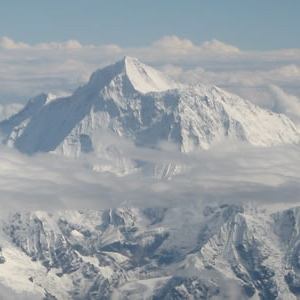Travel News
Climbing Everest: The Dangerous Lives of Sherpas
 After the tragic incident last week that killed 16 sherpas climbing the Khumbu Icefall on Mount Everest, attention has turned toward the sherpa community itself. While sherpas have long been seen as trusted guides who protect adventurous climbers, the dangers they face are often forgotten.
After the tragic incident last week that killed 16 sherpas climbing the Khumbu Icefall on Mount Everest, attention has turned toward the sherpa community itself. While sherpas have long been seen as trusted guides who protect adventurous climbers, the dangers they face are often forgotten.
Here’s a closer look at how tourism has grown in Nepal, how the sherpa community has benefited, and the dangers they face.
The Growth of Tourism
It is estimated that one quarter of the population of Nepal currently lives below the poverty line. As of 2008, the estimated unemployment rate was 46 percent. The average annual income for the country is roughly $600 a year.
Tourism has made a significant difference in Nepal since May 29, 1953, when Sir Edmund Hillary successfully climbed Everest with Sherpa Tenzing Norgay. While most Westerners saw this as a challenge to prove their strength, the local community suddenly found itself sitting on a business opportunity.
Despite some bumps and incidents, the number of tourists who travel to Nepal each year has steadily increased. In 1984, there were 176,634 tourists in Nepal who stayed for an average of 10.55 days. In 2012, there were 803,092 tourists who stayed an average of 12.16 days.
In 2012, 78 percent of the permits issued by Nepal’s Ministry of Tourism were for Mt. Everest. That same year, 8.2 percent of jobs were directly and indirectly supported by tourism.
As a result, a middle class emerged among sherpas. “Successful sherpas have second homes in Kathmandu to give their kids access to an education,” says Ray Rodney, special projects manager at Wilderness Travel, who lived in Nepal for 11 years. “Even as they become more successful economically and become more Westernized, they want their kids to get a good education and get a job beyond serving the tourists.”
Frequently, at least one person in each Sherpa family works in tourism. Because the window for climbing Everest is very short, most climbing sherpas also work as trekking and hiking guides, which occurs year round. Other family members often work in lodges and restaurants or as porters.
The Sherpa Community
Sherpas are an ethnic group and sherpas are guides. While many ethnic Sherpas are guides for climbing expeditions, there are also guides from other ethnic groups who are called sherpas.
The sherpa community is very tightly knit, and most familial homes are multigenerational. If families do not live together, they often live right next to one another. Since the area is so geographically compact, sherpas all know each other and gather together at festivals.
The Climbing
Sherpas can make between $3,000 to $5,000 per climb, and the typical season only lasts for the month of May. At this time of year, a reduced jet stream and calmer winds make conditions more favorable for climbing. The pay each sherpa receives depends on the company they are working with, the style of the climb, and the length of the journey.
Depending on each company, the number of sherpas per climber varies. Higher quality companies use more sherpas per climber and choose those with more experience. They also use better equipment, which also raises the costs for clients.
As a guide, one of the primary jobs is stocking the four camps that lead up to Everest’s summit. The sherpas begin climbing in late April, before the season begins, and stock the camps with stoves, oxygen tanks, and food. They also fix the lines that climbers clip onto, which make the climbs much safer and easier.
When the sherpas are climbing with an expedition group, they carry most of the weight. They are responsible for food, sleeping bags, tents, gear, and oxygen tanks so that expedition climbers don’t have to carry them.
Each sherpa’s equipment is given to him by his company. They are each provided with down jackets, crampons, boots, and gear that they are able to keep. Some sherpas use old gear, but they can sell their gear to tourists or lodges that re-sell the clothing after the climb is over. Often climbers coming to Everest don’t bring down jackets or other gear and purchase these items once they arrive at base camp.
The danger sherpas face is much more significant than that of the average climber. Outside Magazine recently compiled the number of sherpas who have died on Everest since 2000. In 2012, three sherpas died, and there were four deaths in 2013. The 16 deaths this year make this the worst three years for sherpa deaths in history.
This Accident Has Effected the Entire Community
Since the community is so closely tied, this incident is especially difficult. “People who didn’t have an immediate relative who was killed knew someone who was killed,” says Rodney. “This incident has cast a pall on the whole community.”
“The able-bodied primary supporter of a family is hard to replace,” he continues. “Now the sherpas are speaking up in ways that they haven’t before. We feel this was a long time coming, and brings to light something that has been there for years, which is the unequal treatment sherpas face.”
By Stephanie Ervin for PeterGreenberg.com












